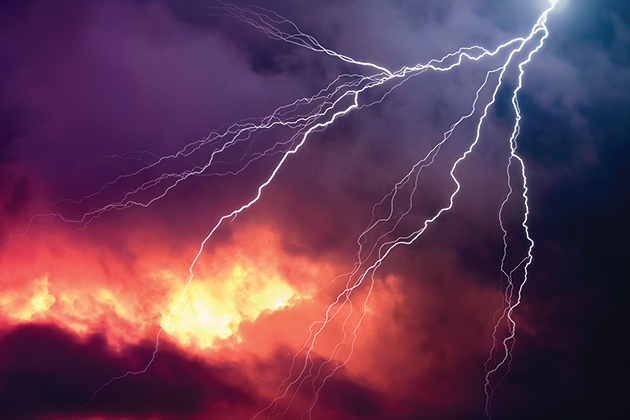
By 2100, lightning strikes in the continental United States will increase by 50% as more explosive thunderstorms accompany a warming climate, according to a new study published in the journal Science.
Based on precipitation levels, cloud buoyancy and warming air, the study's authors—climate science researchers at the University of California, Berkeley—predicted a 7% increase in the number of lightning strikes with each global average temperature increase of a single degree Fahrenheit, or 12% for each degree Celsius. Using 11 different climate models, they projected a total global temperature increase of 7 degrees Fahrenheit (4 degrees Celsius) by 2100. Rising temperatures breed lightning because warming air drastically increases the water vapor in the atmosphere—the fuel for thunderstorms.
"As the planet warms, there will be more of this fuel lying around, so when thunderstorms get triggered, they will be more energetic. This increase in thunderstorm energy is the primary reason for the projected increase in lightning strikes," said the study's lead scientist, David Romps.
Lightning already has a devastating impact in the United States, annually killing approximately 50 people and injuring hundreds more, while sparking about half of all wildfires.
